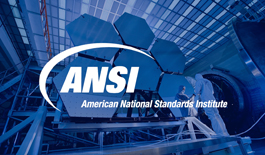
Workplace Health & Safety:
First Aid Programs
US Occupational Safety and Health Administration (OSHA) requires that employees be given a safe and healthy workplace that is reasonably free of occupational hazards. However, it is unrealistic to expect accidents not to happen. Therefore, employers are required to provide medical and first aid personnel and supplies commensurate with workplace hazards. The details of a workplace medical and first aid program are dependent on the circumstances of each workplace and employer.
Meeting OSHA Standards
Medical and first aid services are addressed in specific OSHA federal standards for general industry, maritime, and construction. Learn More >>
OSHA directs employers to the American National Standard ANSI/ISEA Z308.1 regarding recommended contents.
Below is a list of the minimum requirements based on low-risk, little-to-no workplace hazards:
- Adhesive Bandage
- Adhesive Tape
- Antibiotic Application
- Antiseptic
- Burn Dressing
- Burn Treatment
- Cold Pack
- CPR Breathing Barrier
- Eye Covering
- Eye/Skin Wash
- First Aid Guide
- Foil Blanket
- Hand Sanitizer
- Medical Exam Gloves
- Gauze Roll
- Scissors
- Sterile Gauze Pad
- Trauma Pad
- Triangular Bandage
Do you reside in a state with additional OSHA requirements?
State Plans are OSHA-approved workplace safety and health programs operated by individual states or U.S. territories. There are currently 22 State Plans covering both private sector and state and local government workers and seven covering only state and local government workers. State Plans are monitored by OSHA and must be at least as effective as OSHA in protecting workers and preventing work-related injuries, illnesses, and deaths. Learn More >>
States with OSHA-Approved State Plans:
All other states are considered “Federal OSHA States” and do not require additional health and safety standards.
First Aid Programs
- Provides information on first aid programs and highlights references that provide further fundamentals to help develop and maintain first aid program and skills. Learn More >>
What is First Aid?
- Provides information on first aid and highlights selected references on where to find more information on first aid. Learn More >>
Additional Resources
- Best Practices Guide: Fundamentals of a Workplace First-Aid Program
- Identifies four essential elements for first-aid programs to be effective and successful: management leadership and employee involvement, worksite analysis, hazard prevention and control, and safety and health training. It also includes best practices for planning and conducting safe and effective first-aid training. (OSHA Publication 3317, 2006)
- More >>

